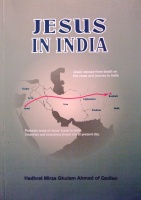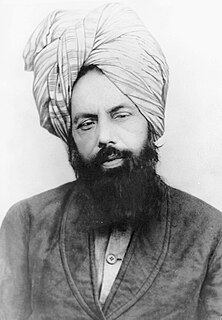
Friedrich Spitta was a German Protestant theologian.
Ulrich Willerding is a professor emeritus of botany at the Göttingen University, Germany. He is also an instructor at a local high school. Willerding is one of the leading European palaeo-ethnobotanists. He has specialized in Medieval Europe but also done work on other times. One of his special interests is weeds. He has worked on bibliographies of European paleoethnobotany. Although a biologist by training, he has worked extensively with archaeologists.

Ernst Adolf Alfred Oskar Adalbert von Dobschütz was a German theologian, textual critic, author of numerous books and professor at the University of Halle, the University of Breslau, and the University of Strasbourg. He also lectured in the United States and Sweden.

Hemis Monastery is a Himalayan Buddhist monastery (gompa) of the Drukpa Lineage, in Hemis, Ladakh, India. Situated 45 km from Leh, the monastery was re-established in 1672 by the Ladakhi king Sengge Namgyal. The annual Hemis festival honouring Padmasambhava is held in early June.
Reinhart Hummel was a German theologian and long-term leader of the Evangelische Zentralstelle für Weltanschauungsfragen (EZW). The EZW is a subdivision of the Evangelical Church in Germany. Located in Berlin, it professes to function as a centralized research, documentation and information center on new religious movements. Hummel is also the author of many books about new religious movements.
Gerhard Scherhorn was a German Professor and economist.

Kurt Aland, was a German theologian and biblical scholar who specialized in New Testament textual criticism. He founded the Institut für neutestamentliche Textforschung in Münster and served as its first director from 1959–83. He was one of the principal editors of Nestle-Aland – Novum Testamentum Graece for the Deutsche Bibelgesellschaft and The Greek New Testament for the United Bible Societies.
The unknown years of Jesus generally refers to the period of Jesus's life between his childhood and the beginning of his ministry, a period not described in the New Testament.
Wilhelm Bousset was a German theologian and New Testament scholar. He was of Huguenot ancestry and a native of Lübeck. His most influential work was Kyrios Christos, an attempt to explain the origins of devotion to Christ as the product of second century Hellenistic forces, and is still the most widely influential academic work on early Christology, even if its conclusions are no supported by modern scholarship.

Jesus in India is a treatise written by Mirza Ghulam Ahmad, the founder of the Ahmadiyya Movement in 1899. The treatise, which was then published as a book, puts forward the view that Jesus survived crucifixion, left Judea and migrated eastward in order to continue his mission to the 'Lost Tribes of Israel', traveling through Persia and Afghanistan and eventually dying a natural and honourable death in Kashmir at an old age. Ghulam Ahmad applied textual analysis of both the Gospels and Islamic sources – the Quran and hadith – and also drew upon medical and historical material, including what he claimed were ancient Buddhist records, to argue his case. Although independent modern scholars such as Norbert Klatt (1988) have rejected Ghulam Ahmad's use of these latter sources as misreadings of material unrelated to Jesus.
Holger Kersten is a German writer on myth, legend, religion and esoteric subjects. He is best known for the books about Jesus' early years and later years in India. In 2005 he led an expedition looking for the birthplace of Mithras.
The first portion of the Bible, the Gospel of John, in a Tibetic language was translated by Moravian Church missionaries William Heyde, Edward Pagel, and Heinrich August Jäschke, and later Dr. August Francke. It was printed in 1862 at Kyelang capital of Lahul in Kashmir. The whole New Testament was printed in 1885 in Ladakh. Another version was translated in 1903. So as not to have the problem of various dialectal differences it was translated into classical Tibetan, but this was not understood by most people. Yoseb Gergen, a Tibetan Christian translated the entire Bible, complete in 1935. This version was translated into a dialect of Tibetan Gergen had accidentally stumbled across, and which was understandable by all Tibetans. It was finally published in 1948. This is known in India as the Tibetan OV Bible. Eliya Tsetan Phuntshog published a New Testament in 1970. There is currently a project going on to translate the Bible into the East Tibetan dialect.
August Heinrich Klostermann was a German Lutheran theologian. He was the father of New Testament scholar Erich Klostermann (1870–1963).
Günter Grönbold is a German Indologist and Tibetologist. He was head of the Oriental Section at the Bayerische Staatsbibliothek Munich. He is an authority on the Pāli Canon and the Buddhist art of the Silk Road and has translated various Sanskrit and Tibetan texts into German.

Heinrich August Jäschke was a German Tibetologist missionary and Bible translator. From 1857 to 1868 he was missionary of the Herrnhuter Brüdergemeine in Kyelang, Lahaul District and Spiti in North India.
Rudolf Schnackenburg was a German Catholic priest and New Testament scholar. Joseph Ratzinger referred to him as "probably the most significant German-speaking Catholic exegete of the second half of the twentieth century."

Karl Friedrich Heinrich Marx was a German physician and college lecturer. He is not related to Karl Marx, the founder of Marxism.

Jesus in Indien. Das Ende einer Legende is a 1985 book by the German indologist Günter Grönbold investigating the Islamic, Christian and Buddhist source material used by the Ahmaddiya muslim founder Ghulam Ahmad in his book Jesus in India. The book is Grönbold's best known book among the general public in Germany, and is the most cited scholarly text about the sources of Ahmad's interpretation and the Roza Bal shrine among subsequent academic and popular writing. Following consideration of the original context and history of the literary sources cited by Ahmad and later Ahmaddiya supporters of the theory that Jesus of Nazareth survived the crucifixion and made a journey to India and was buried in Srinagar Kashmir, Grönbold concludes that Ahmad misidentified material about the putative Christian saint "Yuzafa" from the Barlaam and Josaphat traditions telling a Christianized version of the life of Siddhartha Gautama, as being material concerning Jesus of Nazareth. Grönbold's work was revisited, cited and developed by Norbert Klatt (1988) and Mark Bothe . Bothe regarded Grönbold as the first and only scholar in the area to have developed a history of the origination of the various "Jesus in India" legends.
The Göttingen Faculty of Theology is the divinity school at the University of Göttingen, officially denominated the "United Theological Departments" but commonly referred to as the "Theological Faculty" . It was instituted at the foundation of the University, in 1737, along with the three other original faculties of Law, Medicine, and Philosophy. Over the centuries, the Göttingen Faculty of Theology has been home to many influential scholars and movements, including the rise of historical criticism, Ritschlianism, the History of Religions School, and Dialectical Theology. Its members were also involved in the Göttingen School of History.












